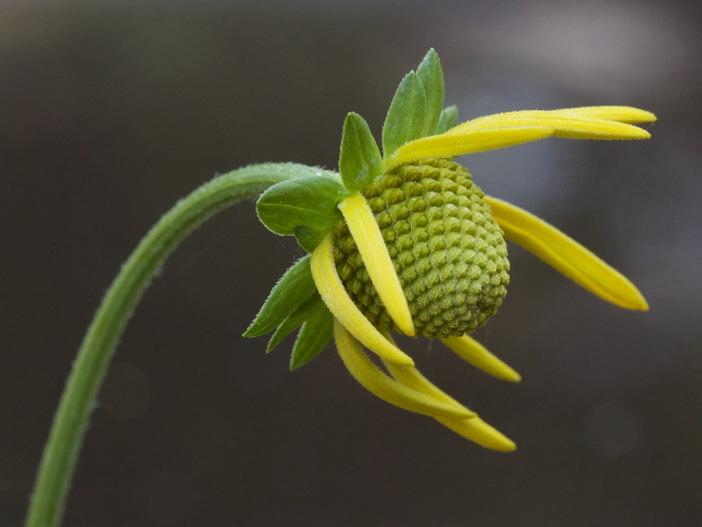California Coneflower
(Rudbeckia californica)
California Coneflower (Rudbeckia californica)
/
/

JKehoe_Photos
CC BY 2.0
Image By:
JKehoe_Photos
Recorded By:
Copyright:
CC BY 2.0
Copyright Notice:
Photo by: JKehoe_Photos | License Type: CC BY 2.0 | License URL: https://creativecommons.org/licenses/by/2.0/ | Uploader: JKehoe_Photos | Publisher: Flickr












Estimated Native Range
Summary
Rudbeckia californica, commonly known as California coneflower, is a perennial herb native to moist meadows, streambanks, and open woodlands, primarily in the Sierra Nevada and Klamath Mountains in California. It is often found in association with pine forests but is not restricted to them. This species typically grows from a thick rhizome, with a stem that can exceed one meter in height and sometimes approaches two meters, usually without branches. The inflorescence is a solitary, sunflower-like flower head with a base up to 6 centimeters wide, lined with several yellow ray florets that are 2 to 6 centimeters long. These ray florets extend outward before reflexing back along the stem. The disc florets filling the center of the head are greenish-yellow and can be button-shaped, conical, or cylindrical. Most of the large leaves are basal, with a few alternately arranged along the stem.
The California coneflower is valued for its showy flowers, which bloom from late spring to early fall, attracting pollinators such as bees and butterflies. It is used in native plant gardens, meadowscapes, and as part of pollinator-friendly landscaping. It is adaptable to various moisture levels and can thrive in full sun to part shade, preferring soils with good drainage. While it is drought-tolerant once established, it benefits from occasional watering during prolonged dry periods. There are no widely known cultivars of this species, but its natural form is quite striking in the garden. Potential problems include susceptibility to powdery mildew and rust, especially when grown in crowded conditions with poor air circulation.CC BY-SA 4.0
The California coneflower is valued for its showy flowers, which bloom from late spring to early fall, attracting pollinators such as bees and butterflies. It is used in native plant gardens, meadowscapes, and as part of pollinator-friendly landscaping. It is adaptable to various moisture levels and can thrive in full sun to part shade, preferring soils with good drainage. While it is drought-tolerant once established, it benefits from occasional watering during prolonged dry periods. There are no widely known cultivars of this species, but its natural form is quite striking in the garden. Potential problems include susceptibility to powdery mildew and rust, especially when grown in crowded conditions with poor air circulation.CC BY-SA 4.0
Plant Description
- Plant Type: Herb
- Height: 3-4 feet
- Width: 4-6 feet
- Growth Rate: Moderate
- Flower Color: Yellow
- Flowering Season: Summer
- Leaf Retention: Deciduous
Growth Requirements
- Sun: Full Sun, Part Shade
- Water: Low, Medium
- Drainage: Medium
Common Uses
Bee Garden, Bird Garden, Butterfly Garden, Deer Resistant, Drought Tolerant, Hummingbird Garden, Low Maintenance, Rabbit Resistant, Showy Flowers
Natural Habitat
Native to moist meadows, streambanks, and open woodlands, often associated with pine forests, in the Sierra Nevada and Klamath Mountains in California
Other Names
Common Names:
Scientific Names: , Rudbeckia californica, Rudbeckia californica var. californica, Rudbeckia californica var. glauca,
GBIF Accepted Name: Rudbeckia californica A.Gray